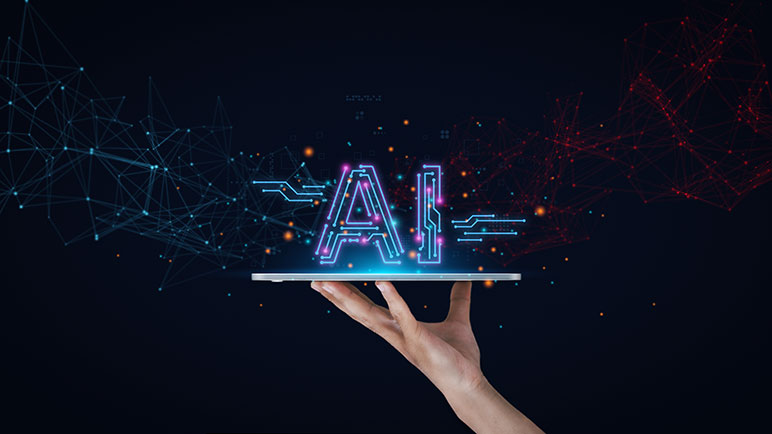MyActuary.AI The Journey of Democratizing Actuarial Knowledge Through AI

By now, most actuaries should be somewhat familiar with artificial intelligence (AI) and Generative AI tools such as those powered by Large Language Models (LLMs) like ChatGPT and CoPilot. While many of these tools have penetrated popular culture, not many have ventured into the actuarial-specific domain outside of machine learning algorithms used to make predictions for actuarial analysis. Enter MyActuary.AI, a ChatGPT-like interface specifically trained on actuarial literature and documentation and powered by an LLM. This article outlines the origin and journey of developing MyActuary.AI along with thoughts on the future of the actuarial profession with the advent of more powerful AI tools.
The Genesis of MyActuary.AI
In the late ’90s, the internet revolutionized the world, but I was too young to seize its opportunities. Similarly, during the smartphone era, as a fresh actuarial graduate, I stood on the sidelines, watching the tide of innovation sweep by. I witnessed the cloud technology boom, yet it remained a distant, enterprise-focused phenomenon.
Determined not to miss the AI wave, I was captivated by the emergence of ChatGPT in early 2023. A friend, an AI Ph.D. at Amazon, once said to me “AI leaps forward in fits and starts.” There would be slow to no progress for five to 10 years, and then suddenly there would be a game changing event or breakthrough in AI. That has been the trend for the last 20 to 30 years in AI. Indeed, since the invention of Transformer models[1] at Google in 2017, AI had taken a quantum leap. It was time to harness this potential in actuarial science.
The Vision and Purpose of MyActuary.AI
People often refer to their personal financial advisors with a sense of ownership, saying, “'My accountant.” This familiar concept underscores the value of personalized financial guidance. In a similar vein, why shouldn't individuals and businesses also boast, “My actuary,” when referring to their personal actuarial AI assistant? It is an AI assistant providing actuarial knowledge to everyone. From exam guidance to insights into pricing and reserving, this tool is aimed to be as versatile as the sky is vast.
By leveraging the power of AI, I aimed to create a tool that could provide accurate, detailed, and easily understandable responses to a wide range of actuarial queries.
The development of MyActuary.AI involved training an AI model on a vast corpus of actuarial literature. This included publicly available publications from the actuarial professional bodies and societies. The model was trained to understand and respond to a wide range of actuarial topics, from the basics of actuarial science to complex topics like reserving, pricing, and risk management.
You can ask MyActuary any actuarial-related question, from crunching complex formulas to researching the latest actuarial regulations and standards of practice. In short, it can offer the following:
- Actuarial insights on pricing and reserving,
- actuarial formulae, and
- updates on regulations and Actuarial Standards of Practice (ASOP).
Lessons Learned: Leveraging Strengths in Development
A firm believer in playing to one's strengths, I collaborated with an AI developer, focusing on my actuarial expertise while they handled the technical aspects. The initial ambition included a query feature, but computational and data challenges led us to streamline the focus to a chat-centric interface.
The development was an intricate and rewarding journey, marked by a deep dive into the realms of actuarial science and artificial intelligence. It commenced with extensive research to identify the core needs and pain points of our target users.
While MyActuary.AI can provide detailed responses, it doesn't have access to real-time data or personal information, and its responses should not be used as personal advice.
The Future of the Actuarial Profession with Generative AI Tools
Generative AI (GenAI) tools are set to revolutionize the actuarial profession, helping to automate repetitive tasks, freeing actuaries to focus on strategic, value-added activities. The tools offer actuaries the ability to analyze vast data sets, identify patterns, and generate insights with unprecedented speed and accuracy.
Current iterations of AI tools still require human validation. Actuaries are uniquely positioned to validate AI outputs, combining their domain expertise with AI insights for more informed decision-making. The synergy between human expertise and AI will drive innovative risk models and predictive capabilities. Tools like ChatGPT and GitHub Copilot exemplify this integration between humans and AI. ChatGPT assists in data analysis, report generation, and even serves as a code interpreter. GitHub Copilot, meanwhile, is a valuable coding companion, enhancing the precision and efficiency of programming tasks for actuarial coders.
The integration of GenAI into tools like Excel, Access, and PowerPoint is just the beginning. This fusion will enable actuaries to improve accuracy, efficiency, and stay ahead of regulatory curves, making the actuarial profession not just more efficient but also more enjoyable. It would be interesting to see how future iterations workout like ChatGPT8 that can do things in a better way than the current ChatGPT4. For instance, it might be open to build models from scratch in Excel that are production ready, write very lucid content, write code that is bug-free and works the very first time, not hallucinate and be more than a productivity enhancer or assistant.
Conclusion
While some may see AI as a disruptive force, I view it as a gateway to new possibilities, enabling actuaries to enhance their skills and explore uncharted territories in risk management and data analysis. With AI, the actuarial profession is not just evolving; it's transforming into a more dynamic, insightful, and impactful field.
Statements of fact and opinions expressed herein are those of the individual authors and are not necessarily those of the Society of Actuaries, the newsletter editors, or the respective authors’ employers.
